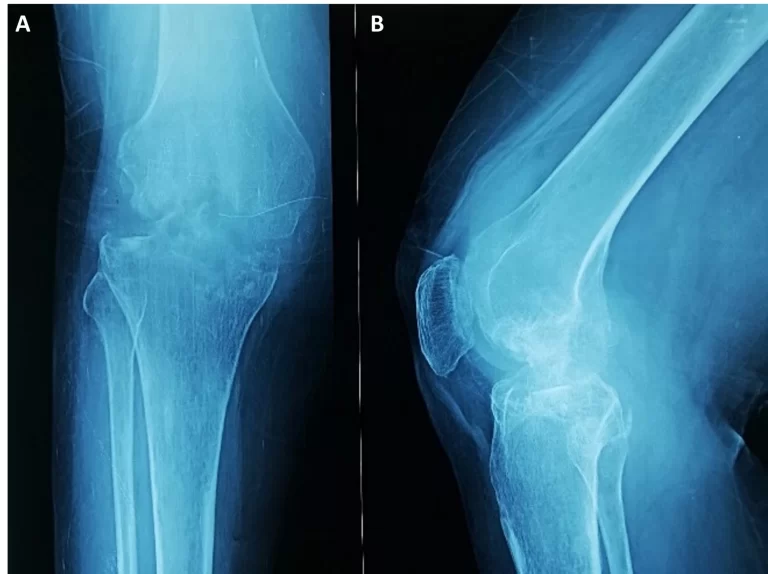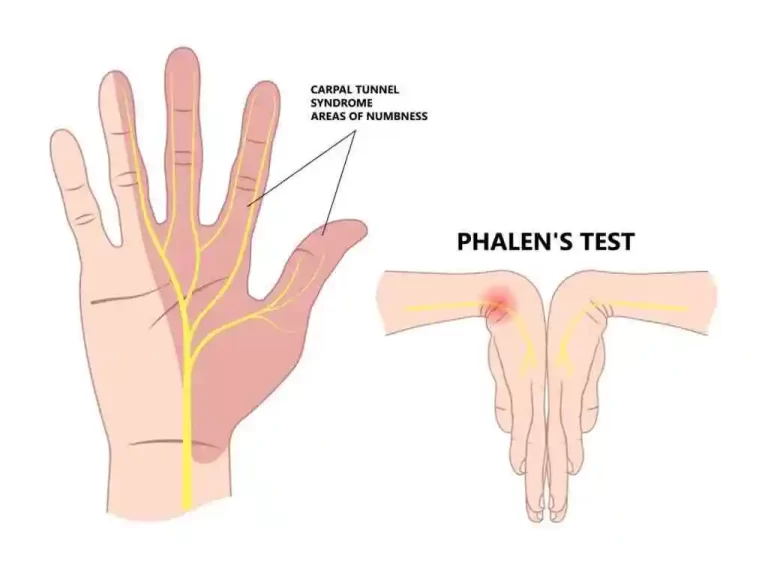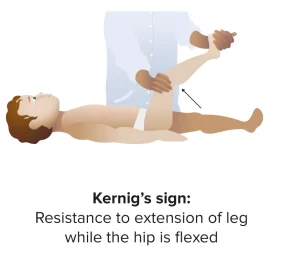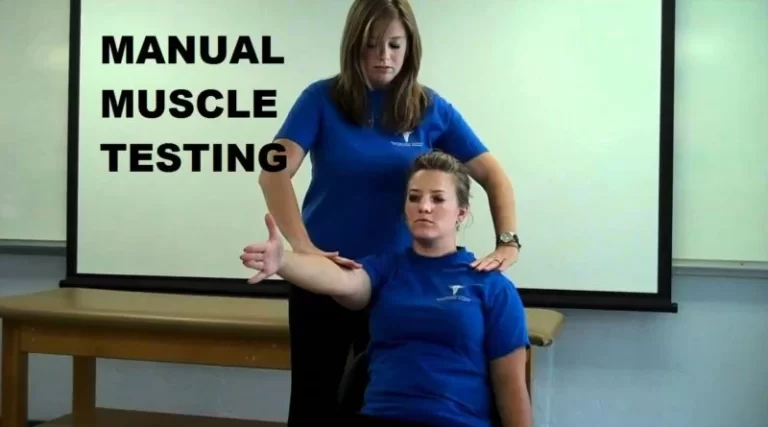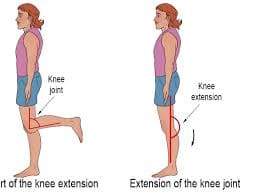Brudzinski Sign
What is Brudzinski Sign?
Brudzinski’s sign is a clinical test used to assess meningeal irritation, commonly seen in meningitis. It is positive when passive flexion of the neck causes involuntary flexion of the hips and knees, indicating possible meningeal inflammation.
The doctor Józef Brudziński, who initially characterized it in the early 1900s, is remembered by the name.
The inflammation of the meninges, the membranes that surround and protect the brain and spinal cord, is known as meningitis.
Numerous causes, such as bacterial, viral, fungal, or parasite diseases, might contribute to this condition
Purpose
Brudzinski’s sign is used to assist determine whether meningeal irritation, a defining feature of meningitis, is present. The inflammation of the membranes around the brain and spinal cord results in meningeal irritation, which makes them sensitive and unpleasant.
Technique
- Step1: A person rests on their back.
- Step 2: The examiner flexes the subject’s neck forward and raises their head off the bed or table.
- Step 3: In reaction, if the person’s knees and hips bend uncontrollably, the sign is positive. The meaning of a positive Brudzinski’s sign: An individual may have meningitis if their Brudzinski’s sign is positive. However, as other disorders might also provide a positive result, it is not an accurate diagnosis for meningitis.
Brudzinski’s Sign Examination Video
Types of Brudzinski’s Sign
There are three types of Brudzinski’s sign:
Although Brudzinski’s sign may be classified into three forms (neck, cheek, and symphyseal), the “upper” and “lower” are not commonly used to refer to them.
Neck sign: The most common type of Brudzinski’s sign is this one. The patient’s neck is flexed forward to induce it. When the patient’s hips and knees flex uncontrollably, it is a positive.
Cheek sign: Applying pressure to the patient’s cheek causes this indication. The patient’s arm flexing at the wrist and elbow is positive sign
Symphyseal sign: By putting pressure on the patient’s pubic bone, this symptom is produced. When the patient’s legs bend at the hips and knees, it’s a positive sign
Clinical Significance
Since Brudzinski’s sign is not very sensitive, not every meningitis patient will exhibit it.
Yet it is rather specific, which means that meningitis is more likely to be indicated if it is present.
It’s important to remember that Brudzinski’s sign can also occur in other illnesses like encephalitis or subarachnoid hemorrhage that irritate the meninges.
Indications
Patients with suspected meningitis should undergo the Brudzinski test, especially if they have fever, headache, and stiff neck.
Patients who have other symptoms of meningeal irritation, such as photophobia (sensitive to light) and nausea or vomiting, should additionally take it.
Patients of all ages can be evaluated for meningitis with the Brudzinski test, but newborns and young children may have more challenging results.
Contraindications
Babies that show extreme sluggishness or unconsciousness: In certain situations, the baby might not participate throughout the exam, and the outcomes might not be accurate.
It might be challenging to properly administer the Brudzinski test to neonates due to increased muscular tone or stress.
Evidence
The Brudzinski test for meningitis has a somewhat complicated diagnostic value since it has both advantages and disadvantages.
Advantages:
High specificity: Meningeal irritation, frequently caused by meningitis, is strongly indicated if the Brudzinski test is positive, which means the patient bends their hips and knees uncontrollably when their neck is flexed.
This indicates that it is effective in determining who genuinely has the condition.
Weaknesses:
Low sensitivity: Not all instances of meningitis can be detected by the Brudzinski test.
Many meningitis patients may have a negative Brudzinski test, which means they may not exhibit the involuntary bending of their legs.
This implies that it may overlook certain situations of the disease.
Practical implications of this:
A positive Brudzinski test raises serious concerns of meningitis and is a useful clue for medical professionals.
A negative Brudzinski test does not rule out meningitis.
To determine a diagnosis, doctors must take into account additional variables such as symptoms, medical history, and more testing.
FAQs
Is Brudzinski sign seen in TB meningitis?
The sensitivity of Brudzinski’s nape-of-the-neck a sign was 96%.
Which sign is Kernig’s vs Brudzinski?
Kernig’s sign: Place the patient in a supine position with their hips 90 degrees flexed. If the knee suffers when passively extended, the test is positive. Place the patient in a supine position and passively flex their neck to demonstrate Brudzinski’s sign. If the hip and knee reflexively flex as a result of this maneuver, the test is positive.
What is the lowest of Brudzinski’s sign?
Applying pressure on the pubic symphysis results in the similar bending of the lower limbs.
What is the sensitivity of Brudzinski and Kernig signs?
In 1909, Brudzinski reported that the nape-of-the-neck sign was 96% sensitive and Kernig’s sign was 57% sensitive for patients with bacterial or tuberculous meningitis . These clinical observations are now thought to be signs of inflammation of the meninges.
What are 5 symptoms of meningitis?
Fever and / or vomiting. …
Severe headache. …
Limb / joint / muscle pain
Cold hands and feet / shivering. …
Pale or mottled skin. …
Breathing fast / breathless
What is the difference between upper and lower Brudzinski sign?
Upper: When the chin is moved toward the chest to check for neck stiffness, the lower limbs’ hips and knees reflexively flex. b) Lower: Applying pressure to the pubic symphysis causes the same bending of the lower limbs.
References
- McLean, A. (2022, October 13). Brudzinski’s Sign: Purpose, limitations, diagnosis, and more. Healthgrades. https://resources.healthgrades.com/right-care/symptoms-and-conditions/brudzinski-sign
- Brudzinski’s sign of meningitis. (n.d.). https://adamcertificationdemo.adam.com/content.aspx?productid=146&pid=2&gid=19069
- Kernig’s and Brudzinski’s signs – Citizendium. (n.d.). https://citizendium.org/wiki/Kernig%27s_and_Brudzinski%27s_signs


